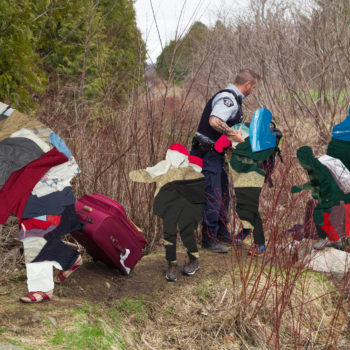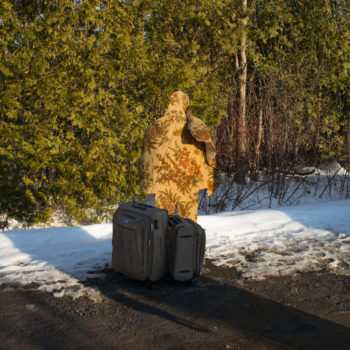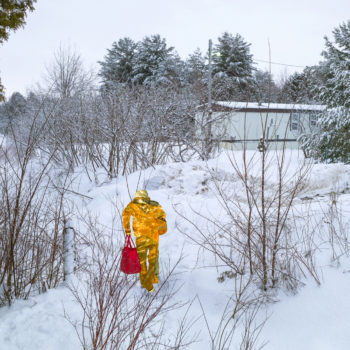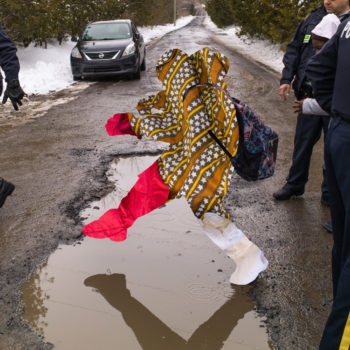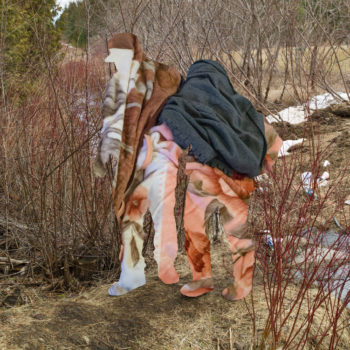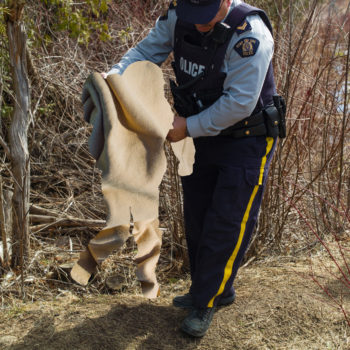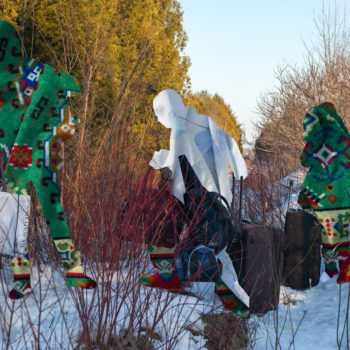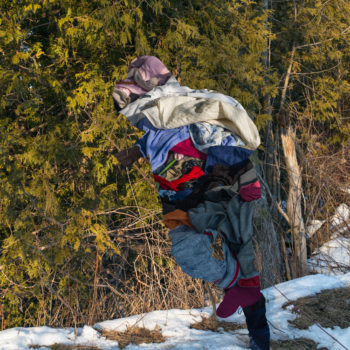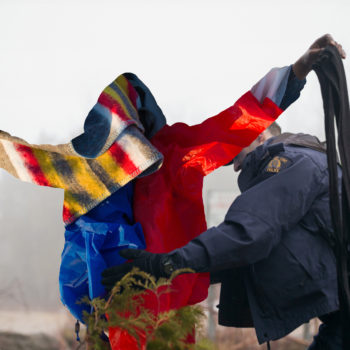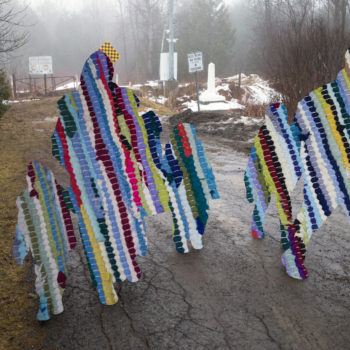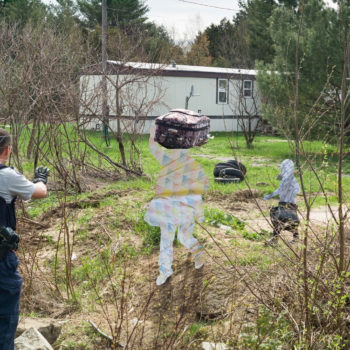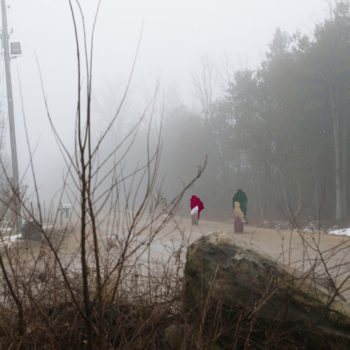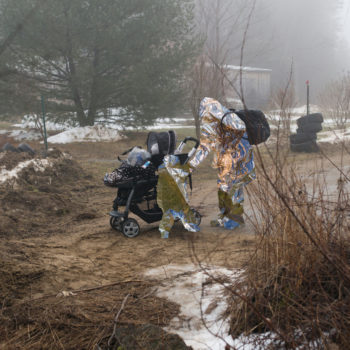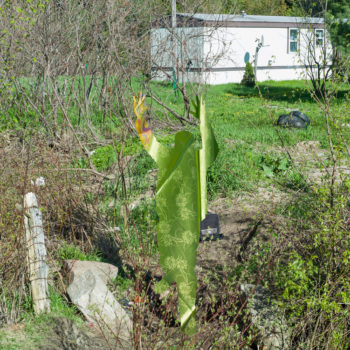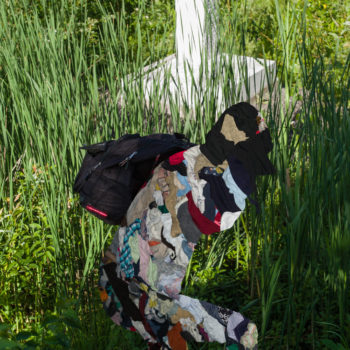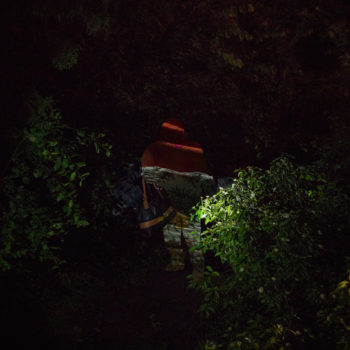Untitled 1, Roxham Road, from the series Intersection, 2017
Medium: Composite photography; archival pigment print
Untitled 2, Roxham Road, from the series Intersection, 2017
Medium: Composite photography; archival pigment print
Untitled 3, Roxham Road, from the series Intersection, 2017
Medium: Composite photography; archival pigment print
Untitled 4, Roxham Road, from the series Intersection, 2017
Medium: Composite photography; archival pigment print
Untitled 5, Roxham Road, from the series Intersection, 2017
Medium: Composite photography; archival pigment print
Untitled 6, Roxham Road, from the series Intersection, 2017
Medium: Composite photography; archival pigment print
Untitled 7, Roxham Road, from the series Intersection, 2017
Medium: Composite photography; archival pigment print
Untitled 8, Roxham Road, from the series Intersection, 2017
Medium: Composite photography; archival pigment print
Untitled 9, Roxham Road, from the series Intersection, 2017
Medium: Composite photography; archival pigment print
Untitled 10, Roxham Road, from the series Intersection, 2017
Medium: Composite photography; archival pigment print
Untitled 11, Roxham Road, from the series Intersection, 2017
Medium: Composite photography; archival pigment print
Untitled 12, Roxham Road, from the series Intersection, 2017
Medium: Composite photography; archival pigment print
Untitled 13, Roxham Road, from the series Intersection, 2017
Medium: Composite photography; archival pigment print
Untitled 14, Roxham Road, from the series Intersection, 2017
Medium: Composite photography; archival pigment print
Untitled 15, Roxham Road, from the series Intersection, 2017
Medium: Composite photography; archival pigment print
Untitled 16, Roxham Road, from the series Intersection, 2017
Medium: Composite photography; archival pigment print
Intersection
Artist Statement
The Script
– Stop. If you walk further you’ll be entering Canada illegally and you will be arrested.
– I know. You have to help us. I am really sorry we have to break your laws. We are entering.
The most frequented irregular entry point for asylum seekers coming to Canada is Roxham Road, an otherwise bucolic closed border area shared by the province of Québec and the state of New York. And since early 2017, the number of crossings there has grown exponentially, largely fueled by the fear of President Trump’s anti-migration policies coupled with Prime Minister Trudeau’s efforts to offer a counter position and image.
It all happens in five to fifteen tense yet surprisingly civilized and ritualistic minutes. Asylum seekers take a cab to this exact location a couple of meters from the white obelisk marking the border. As they take their suitcases nervously out of the trunk, they get the mandatory dry verbal warning by the Royal Canadian Mounted Police (RCMP) agents standing on the northern side: “if you cross here, you’ll be arrested”.
The warning has ambiguity and may sound like a hidden invitation to cross. It is a fine balance between the tone and body language of a usually empathetic RCMP agent – working around contradictory policies and laws – and the awareness and language skills of the asylum seeker. Some agents even use friendly Creole and Spanish words they learned on UN missions. Yet, the exchange scares the most vulnerable, used to fearing uniforms and authority. Like a young pregnant woman from Nigeria who, just steps from the border, stopped dead in her tracks upon hearing the warning, as she cried and pleaded with the RCMP to let her come in. Eventually, a US Border Patrol agent came and took her away. Who knows what happened to her? That was the first crossing attempt I witnessed.
That said, after a few moments of hesitation, most asylum seekers cross the invisible arbitrary line into Canada, hoping for the best, hoping for a better life. Once they cross over, RCMP officers change their discourse and attitude: they remain firm but help them climb the snowbank and carry their luggage. They arrest them, but play with the kids to decrease the built-up tension. “You are now safe and in Canada, but I do have to handcuff you”. Asylum seekers are then driven away for further processing at the RCMP headquarters. The scene is vacant and quiet again, often for hours. The wind and the nearby stream can be heard, I see cats and birds sloppily crossing back and forth between the two countries. And then, another taxi arrives or a lonely walker shows up on the US side of Roxham Road, ready to change their life. RCMP agents once again put their gloves on and prepare to shout.
As one stands and waits on Roxham Road, one sees the impact of wars, disasters and economic stalemates entering in four jumpy footsteps. In this compressed ten meter-wide microcosm one sees the violence of policies and conflicts, the contemporary challenges to physical borders and nationalisms, the reach and limits of humanitarianism relying on loopholes in ambiguous laws, and the emotional confusion wrapping it all.
The Document
With Intersection, I documented the evolution of the hyper-located phenomenon from February through July 2017, as both the public and the authorities were trying to grasp its meaning and scope. I made sixteen visits to Roxham Road, and witnessed 180 crossing attempts. Asylum seekers came from various continents and countries: Eritrea, Djibouti, Sudan, Syria, Palestine, Democratic Republic of Congo, Colombia, Turkey, Libya, Yemen, Guatemala, Haiti, El Salvador, Angola, Chad, the Philippines, Nigeria, Burundi, Mauritania, Zimbabwe, and more.
During those sensitive moments of public interest, I faced the challenge of representing a complex historical and political event without putting the vulnerable individuals further at risk. To resolve this dilemma, I chose to overlay the silhouettes of asylum seekers with various fabrics I photographed when I covered the migrant crisis across Germany, Austria and the Balkans during fall of 2015 – blankets given to stay warm, clothes donated, and tents planted to provide temporary shelter. In an effort to capture the array of emotions and confusion experienced at Roxham, I also made audio recordings of each crossing.
What particularly strikes the public imagination at Roxham Road is that these crossings by refugee claimants happen in broad daylight, both literally and figuratively, at this same unremarkable location, routed to this irregular entry point by international legal constraints. This odd circumstance gives the impression that the situation is out of control and that Canadian authorities are overwhelmed. However, to offer context, country-wide historical data shows that this number of claims is not unusual, and that it is manageable for a country like Canada. With about 22,000 refugee claimants registered in 2017 so far, we remain within the range of the 44,600 registered in 2011 or the 36,850 registered in 2009.
Early in August 2017, seeing a sharp spike in the influx of Haitians crossing at Roxham Road, the RCMP for the first time made physical adjustments to the location: wild bushes were trimmed, road and ditches were leveled, tables and shade tents were put up, portable toilets and chairs were provided. Also for the first time, media access became controlled and limited by fences. This relative normalization of the site marked the natural end of my project Intersection. It also coincided with the beginning of a new phase of reckoning by the authorities, with additional measures being taken across the province. On August 2, the nearby city of Montreal announced that the Olympic Stadium would now house newly arrived asylum seekers. Almost exactly two years ago, the city of Munich – facing a much larger influx – had done the same.
I hope that Intersection will help us reflect on the larger context of humanitarian principles and migratory flows, on why people take to the road and what they hope to find, on the obstacles they face, and on our collective responsibilities towards them.
— Michel Huneault, August 2017
Availability & Pricing
Prints are available in the following formats:
Size: 17″ x 11″; Edition: 7 + 2AP
Size: 30″ x 20″; Edition: 5 + 2AP
Size: 40″ x 27″; Edition: 3 + 2AP
Please contact the gallery for more information, including current availability and pricing.
Request InfoExhibitions
Intersection, Circuit Gallery, Toronto, 2017

